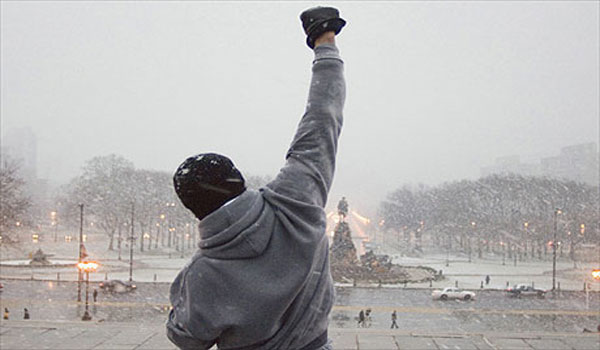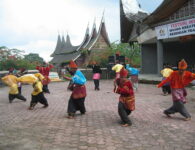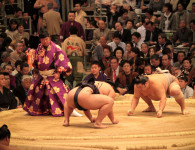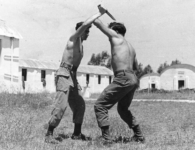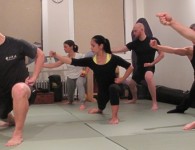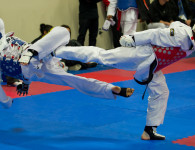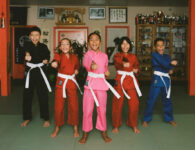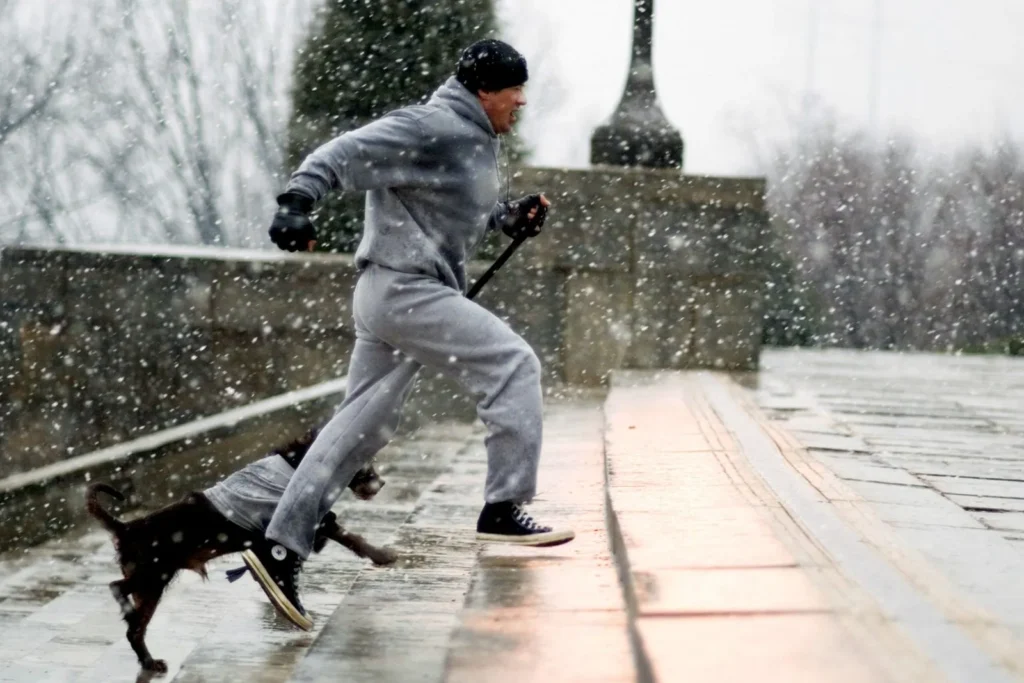
When you think of outdoor winter sports, martial arts probably isn’t the first thing that comes to mind. And that’s understandable. Snow might look cool in cold weather training montages in beloved action movies like Rocky IV, but the reality is a little more harsh. The cold can be downright unpleasant. Learning how to work in it — and actually working in it — can be challenging. Not everything you can do in a dojo can be properly adapted for outdoor use at this time of year. All things considered, most of us would probably prefer to be training indoors at the moment.
Martial arts is all about embracing challenges and learning from them, though, and we’re facing some interesting challenges right now. Maybe gyms are closed in your area. Maybe you’re not comfortable training indoors at the moment, or can’t for medical reasons. Perhaps you’re looking for something new and are curious about how to take better advantage of the great outdoors. Or maybe you’re just getting cabin fever and need a new excuse to get out and get moving.
Whatever your situation, outdoor martial arts training in the winter offers at least as many opportunities as poses challenges. With the right prep and the right care, outdoor training at this time of year could open up a whole new winter wonderland of lessons and gains.
Here are four tips to help you plan and get the most of a winter outdoor workout:
1. Be Prepared, But Be Flexible
Being able to bend like a tree in the wind without breaking is an important lesson for all martial artists. And it’s one that will really be tested and really pay off here.
Winter weather conditions can change quickly. You can — and should — follow your local weather and plan accordingly. But you should also keep a number of backup plans in mind. If there’s a cold weather warning for your area, switch to an indoor workout that day. Or take a rest day and make staying warm your training goal!
If it’s not too cold to go outside at all but the temperature is sub-optimal for any training that involves stopping and starting like intervals or rounds, you could always consider a form of training that will keep you consistently moving like a run. Or you could put together a training plan where you walk in between rounds instead of resting to keep you moving and keep you warmer.
You can also prepare for days where the weather ends up being much better than promised. Keep a gear bag full of outdoor training gear ready to go at all times. That gives you the option of jumping into your gear and getting in an impromptu workout if your day ends up warmer than expected or a storm passes your area.
2. Be Creative
Outdoor martial arts in the winter will also teach you how to be adaptable in terms of the kind of training you do and how you do it. Not every martial arts drill or cross-training workout will translate perfectly to the outdoors at this time of year. But you can play around with different ideas and techniques and come up with some fun and challenging alternatives.
Slippery winter conditions make winter a terrible time to try any workouts that focus on precise footwork and movement. For example, it’s highly unlikely you’ll do the best traditional shadowboxing of your life two feet deep in the aftermath of a snowstorm. But what you can do is slow down your shadowboxing workout and focus on other aspects of your game instead, like balance, agility, awareness of your surroundings, etc.
Or you can switch up your routine to challenge the muscles and the brainpower involved in shadowboxing in different ways. Sprinting in snow drifts can be an excellent workout for balance, body awareness, and cardio. (But please be careful of ice if you try this. Training in snow can be great, but the risk vs. reward when you get to things like black ice is much too high. If it’s like a skating rink outside, try something on solid ground instead!)
3. Dress Properly
Dressing appropriately for the weather is always a good idea when it comes to good outdoor training. But it’s especially important in winter. The right gear is all that is standing between you and a nasty case of chills — or worse! But you also don’t want to overdress, because overheating and overtraining can still be an issue. Yes, even in the dead of winter.
The trick to dressing well for outdoor training in the winter is layers. Invest in a base layer of long underwear or other heat tech gear and then build an outfit on top of that based on the weather and your type of training.
In running circles, the conventional wisdom is that you should dress like it’s approximately 10 degrees Celsius hotter than it is outside. This recommendation translates well to workouts where you’ll be in a fairly constant state of motion, like shadowboxing with active recovery in between rounds, animal workouts, and many forms of cross-training.
Other types of training will likely require more layers. But you can get creative here, too. You can even put a heavy-weight martial arts uniform over your base layer. Add some wool athletic socks, a pair of well fitting gloves and a beanie, put down some portable mats, and you can try an outdoor open mat!
4. Cool Down — Then Warm Up Again!
The goal for a winter cool down isn’t to get literally cool. You just want to slowly return your heart rate to normal and allow your body and brain to gradually return to a resting state. Once that’s taken care of, you’ll need to focus on literally warming up again.
If you’re working out at home or close to home, get out of your sweaty workout gear as soon as possible. Have a warm shower or bath, change into some warm clothes, and maybe even treat yourself to coffee or tea to help regulate your body temperature.
If you’re training somewhere that’s not close to home, pack an extra set of sweats in your gear bag. You can throw that on top of your workout wear to help keep the post-workout chills at bay until you can change.
